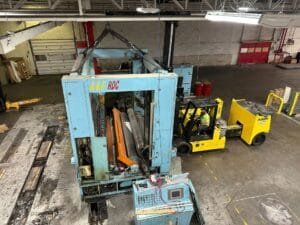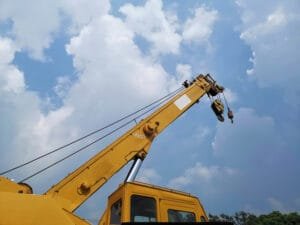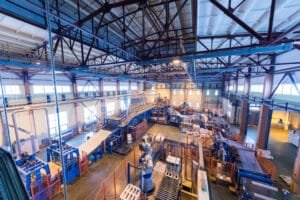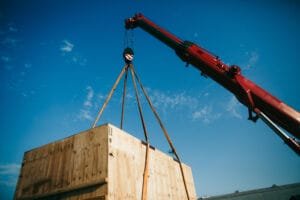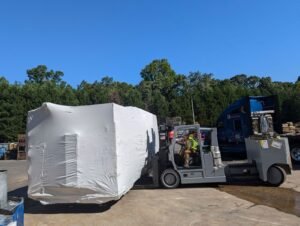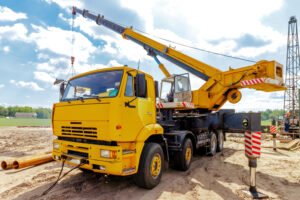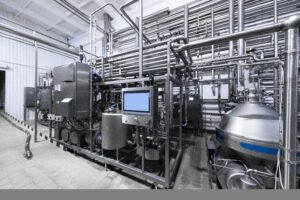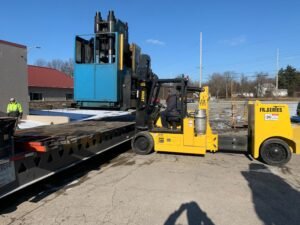In today’s fast-paced and interconnected global economy, supply chain dynamics play a pivotal role in shaping business strategies. The COVID-19 pandemic, geopolitical tensions, technological advancements, and evolving consumer expectations have collectively driven significant changes in global supply chains. Among the most notable impacts of these shifts is the growing trend of manufacturing plant relocations. Companies are increasingly moving their production facilities closer to demand centers, raw material sources, or regions offering strategic advantages. This article delves into the key drivers of these relocations, the challenges companies face, and how they are adapting to the new global supply chain landscape.
The Evolving Landscape of Global Supply Chains
Global supply chains have traditionally been designed to optimize costs. Businesses sought to benefit from low labor costs in regions like Southeast Asia and Eastern Europe. However, the current landscape demands more than cost savings. Companies are now prioritizing resilience, flexibility, and sustainability.
Key factors influencing these changes include:
- Geopolitical Tensions
Trade wars, shifting trade agreements, and increased tariffs have forced businesses to reconsider their reliance on specific regions. The U.S.-China trade war, for example, pushed many companies to reduce dependency on Chinese manufacturing, prompting a surge in relocation activities to countries like Vietnam, India, and Mexico. - COVID-19 Pandemic
The pandemic exposed vulnerabilities in global supply chains. Lockdowns, labor shortages, and transportation bottlenecks disrupted production and deliveries. Businesses realized the importance of diversifying their supply chain and decentralizing operations, leading to plant relocations closer to key markets or secondary suppliers. - Technological Advancements
Automation and smart manufacturing technologies have reduced the dependency on low-cost labor. Developed nations, leveraging Industry 4.0 technologies, are becoming attractive locations for plant relocations. Advanced robotics, IoT, and AI allow companies to maintain competitive production costs even in high-wage countries. - Sustainability Goals
Consumers and governments are increasingly demanding sustainable practices. Relocating plants to regions with access to renewable energy sources or stricter environmental regulations aligns with corporate sustainability goals. Furthermore, shorter supply chains reduce carbon footprints, making relocation a strategic decision. - Regional Free Trade Agreements
Trade agreements like the USMCA (United States-Mexico-Canada Agreement) and RCEP (Regional Comprehensive Economic Partnership) encourage companies to relocate plants to member countries for tariff benefits and improved trade relations.
Challenges in Plant Relocation
While the benefits of plant relocation are clear, the process is not without its challenges. Businesses must navigate a complex web of logistical, financial, and operational hurdles:
- High Initial Costs
Relocating a plant involves significant expenses, including dismantling, transporting, and reassembling machinery, as well as acquiring new facilities. These upfront costs can be a deterrent for many companies. - Regulatory Compliance
Different regions have varying labor laws, environmental regulations, and tax policies. Ensuring compliance in the new location requires careful planning and expertise. - Supply Chain Integration
Relocation disrupts existing supply chain networks. Establishing new supplier relationships and ensuring seamless integration into the production process can be time-consuming. - Talent Acquisition and Training
Relocating plants often means hiring and training new staff, which can delay production ramp-up. Retaining key employees from the previous location is also a concern. - Cultural and Political Risks
Adapting to cultural differences and assessing political stability in the new region is crucial to ensuring long-term success.
Key Industries Impacted by Supply Chain Shifts
Certain industries are more prone to plant relocations due to their reliance on global supply chains and the impact of recent disruptions:
- Electronics and Technology
Semiconductor shortages and trade restrictions have driven electronics manufacturers to relocate closer to demand centers. Many companies are setting up plants in the U.S., Europe, and Southeast Asia. - Automotive
The shift toward electric vehicles (EVs) has led automakers to relocate plants to regions with access to raw materials like lithium and cobalt or where EV demand is high. - Textiles and Apparel
Rising labor costs in traditional hubs like China and the demand for sustainable practices have prompted relocations to countries like Bangladesh, Ethiopia, and Vietnam. - Pharmaceuticals
The pandemic highlighted the need for localized pharmaceutical production. Many companies are relocating plants closer to healthcare markets to ensure timely supply. - Heavy Machinery and Equipment
Industries requiring large-scale production and specialized equipment shifting to regions offering logistical advantages and skilled labor.
Strategic Benefits of Plant Relocation
Despite the challenges, plant relocation offers several strategic benefits:
- Improved Resilience
Diversified supply chains reduce the risk of disruptions caused by geopolitical or environmental factors. - Proximity to Markets
Relocating closer to demand centers shortens lead times, reduces transportation costs, and enhances customer satisfaction. - Cost Optimization
While initial relocation costs are high, companies often benefit from reduced operating costs in the long term due to lower tariffs, taxes, or energy expenses. - Access to Talent and Innovation
Moving to regions with a skilled workforce or strong innovation ecosystems fosters competitiveness and growth. - Enhanced Sustainability
Relocating plants to regions with access to renewable energy and adopting eco-friendly practices align with global sustainability goals.
How Companies Can Prepare for Plant Relocation
To ensure a successful plant relocation, businesses should adopt a systematic approach:
- Conduct Feasibility Studies
Assess potential locations for cost, logistical advantages, and risks. - Develop a Comprehensive Relocation Plan
Include timelines, budgets, and contingency plans to address potential challenges. - Engage Experts
Partnering with relocation specialists and industrial contractors ensures a smoother transition. - Communicate With Stakeholders
Transparent communication with employees, suppliers, and customers minimizes disruptions. - Leverage Technology
Use digital tools for project management, equipment tracking, and supply chain optimization.
Alltracon: A Leader in Plant Relocation Services
Alltracon stands out as a leading service provider in manufacturing plant relocation. With years of expertise in handling complex relocations, Alltracon ensures seamless transitions for businesses aiming to adapt to shifting global supply chains. From equipment dismantling and transport to reinstallation and operational ramp-up, Alltracon offers end-to-end solutions tailored to meet each client’s unique needs.
Conclusion
The shifting dynamics of global supply chains are compelling businesses to rethink their strategies, with plant relocations becoming a key response to these changes. By addressing supply chain vulnerabilities, reducing costs, and aligning with sustainability goals, companies can position themselves for long-term success. While the relocation process presents challenges, partnering with experienced service providers like Alltracon can turn these challenges into opportunities, ensuring a competitive edge in the evolving global market.




